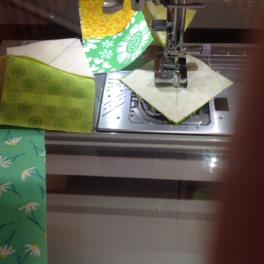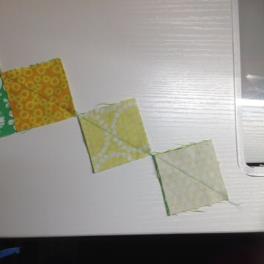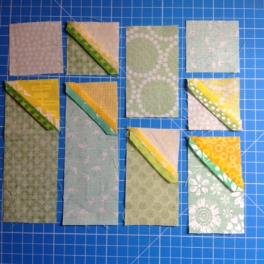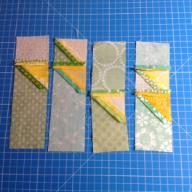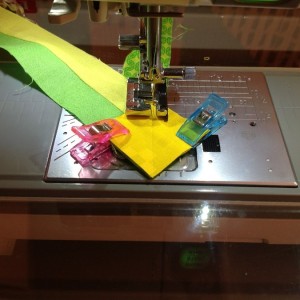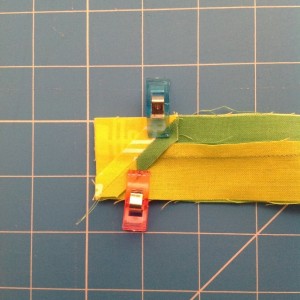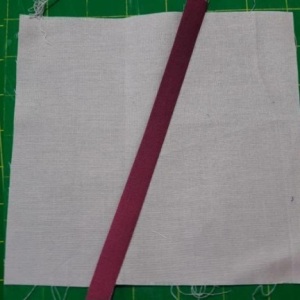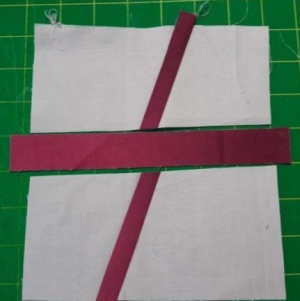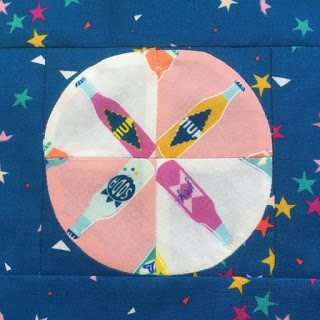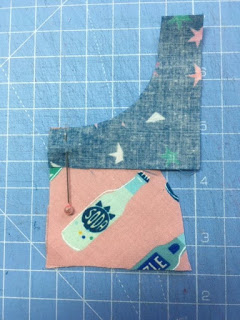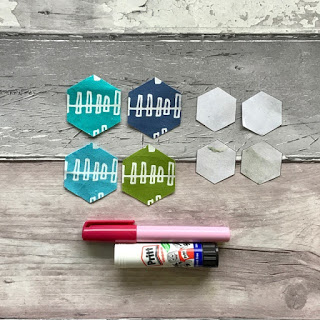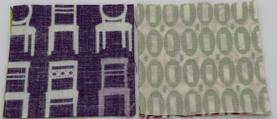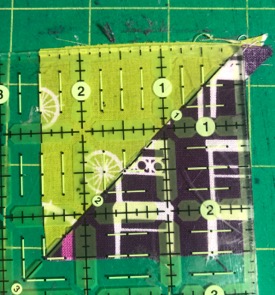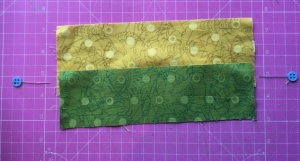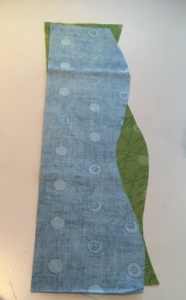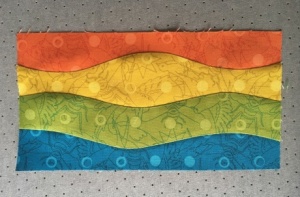Here are the cutting instructions for the advent sewalong which starts on 1 December on Instagram. Each day a clue will be released on Instagram with a photograph of that day’s finished unit(s) and the aim is to sew for about ten minutes every day in the lead up to 25 December. The theme is Valentines so that there is no pressure to quilt and finish the panel by 25 December. You can make a cushion, mini quilt or tote from the finished 15” panel. I have added borders to make an 18” cushion panel.
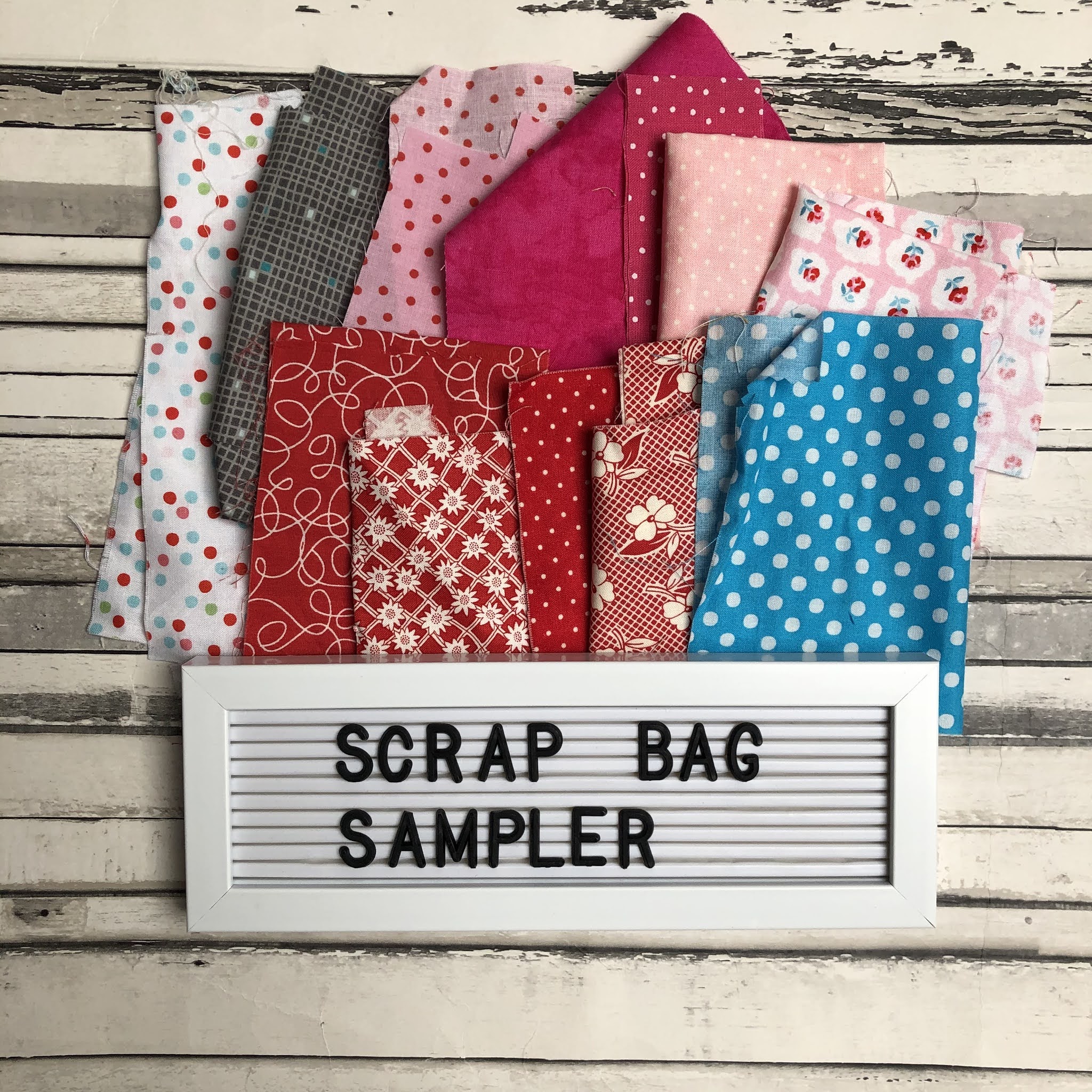
If you add a border to your piece, you will need half a metre of background fabric and scraps of other colours. You can go full on scrappy or not. I have used one fabric for the aqua, red and grey and scrappy for pieces N and S. The cutting took me less than 90 minutes and the sewing will take no more than ten minutes per day apart from day 10.
| Fabric | Quantity | Size | Number | Label |
| Background | 40 | 1 ¼ ” squares | A | |
| 16 | 1 ½ ” squares | B | ||
| 4 | 1 ¾” by 3” | C | ||
| 12 | 1 ¾” squares | D | ||
| 1 | 1½” by 7” rectangle | E | ||
| 8 | 2 ¼” squares | F | ||
| 4 | 1 ½” by 5.5” rectangles | G | ||
| 4 | 1 ½” by 6.5” rectangles | H | ||
| Red | 2 | 1 ¾” by 3” rectangle | K | |
| 1 | 1 ¾” by 3” rectangle | L | ||
| 2 | 1 1/8” by 1 ¾” rectangle | M | ||
| Pink | 4 | 2” squares | 20 in total from 1 or 5 fabrics | N |
| 4 | 1 1/8” squares | P | ||
| 4 | 1 1/8” squares | Q | ||
| 4 | 1 ¾” squares | R same fabric as P&Q | ||
| Mix of pink and red | 20 | 2 ¼” squares | S | |
| 2 | 13/16” by 3” rectangles | T | ||
| Aqua | 2 | 1½” by 7” rectangle | U | |
| 8 | 1 ½”by 3 ½” rectangle | V | ||
| Grey | 4 | 1 ¾” by 5 ½”rectangle | W | |
Amanda (@metroquilter) loves Carolyn Friedlander fabrics and who can blame her. She stash dived for scraps and charm squares for the sewalong.

Here are her pieces all cut and ready to go with a linen background.
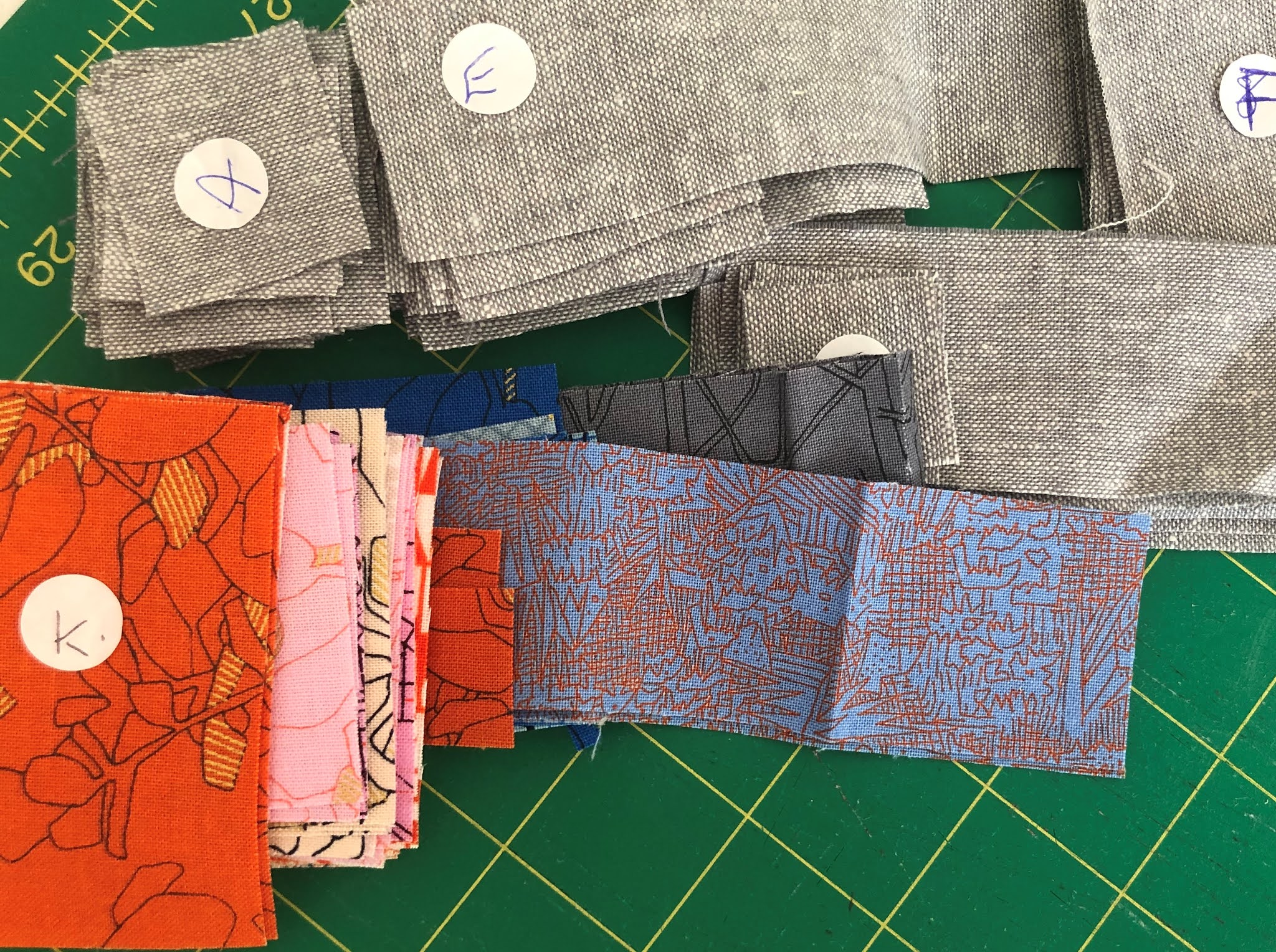
Pippa (@pippaspatch) has channeled her inner sparkle for her choice of background. I have that red stars and spots fabric. I wonder if I used any of it in my project? Both Amanda and Pippa have sensibly chosen a dark grey, my original choice (not in my photograph) was too light and not enough contrast with the background.
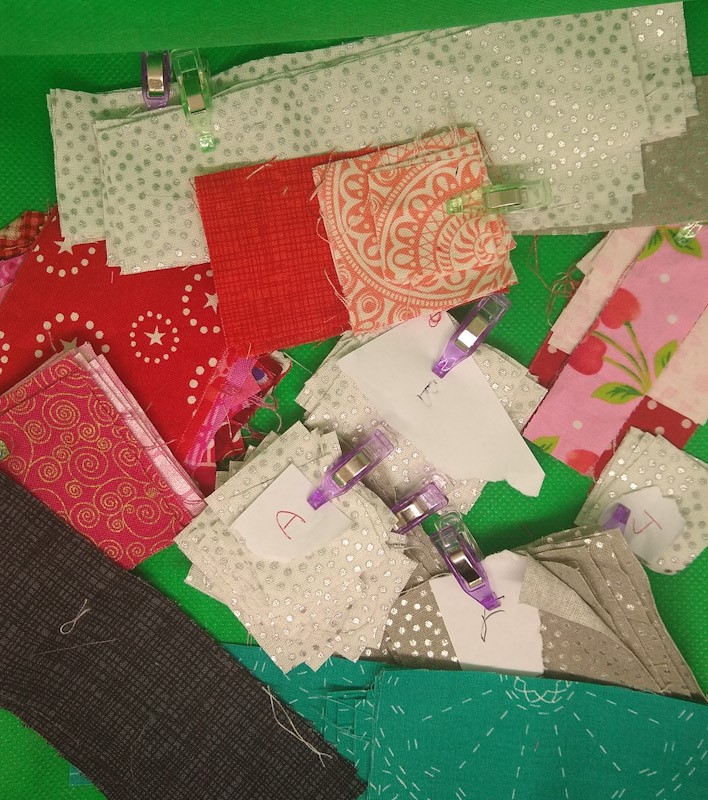
Kim (@getahashtagkim) has chosen these gorgeous purples – not a turquoise in sight! She is making this as a gift for a friend, so has chosen a palette that her friend will like. Dots and fossil fern, you can’t go wrong.

Do post your fabric choices on Instagram using #scrapbagsampler . Other people’s scraps are always more interesting than one’s own scraps.
Visit our designers on Instagram to see their fabric choices : @cotefleurie @getahashtagkim @JustSewSue @lisasew @metroquilter @picosailors @pippaspatch @quirkyhannah @therunninghare









